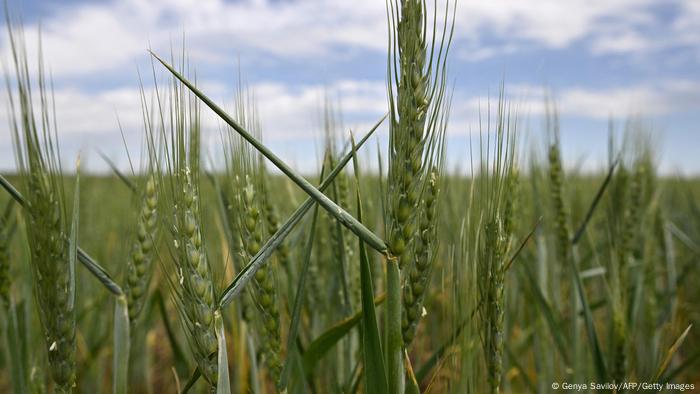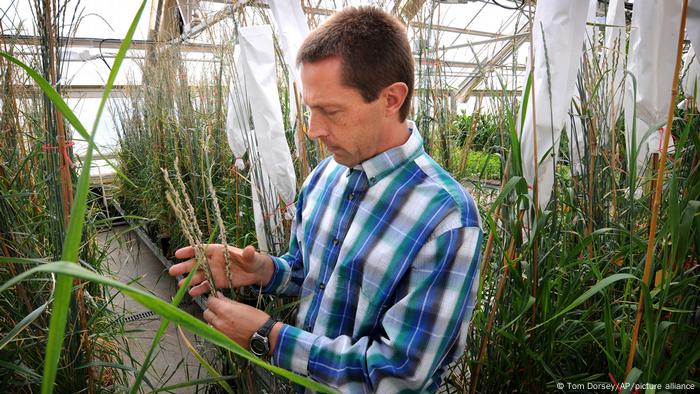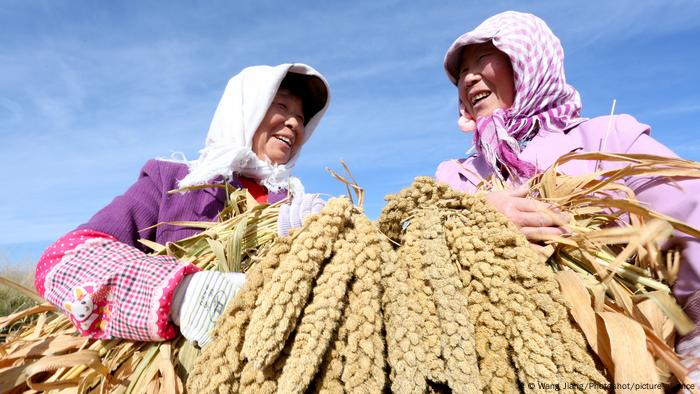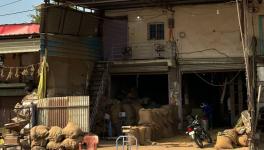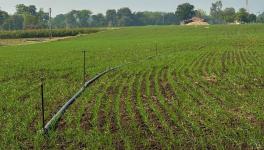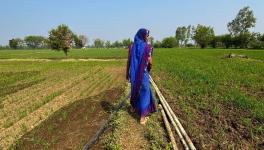Against the Grain: Securing Food Supply with Wheat Alternatives
Egypt grows some of its own wheat but is heavily dependent on imports, much of which comes from Ukraine
The war in Ukraine has highlighted our dependence, not only on Russian fossil fuels, but the massive wheat harvests that flow from the region.
Russia and Ukraine are the world's first and fifth top wheat exporters respectively, and together supply well over 20% of the staple globally.
Much ends up in the Middle East and Africa, including in Egypt, the world's top wheat importer that sources around 80% of its grain from Russia and Ukraine. The country is now subsidizing bread prices as costs skyrocket and supplies dwindle.
The grain shortage sparked by the war is also exacerbating an "unprecedented food emergency" this year in the Sahel and West Africa region, according to the UN's World Food Program. Kenya, Somalia and much of Ethiopia are at risk of acute food insecurity.
Climate change, including an extended drought now ravaging western Africa, is making food scarcity worse. Wheat yields could drop by 7% for every degree Celsius of global warming, especially due to decreasing rainfall, experts warned last week.
To combat food insecurity, countries like Egypt are trying to bolster food independence by expanding domestic production. But wheat is now also being planted in the Egyptian desert, even though that will demand more fertilizers, and scarce water resources.
Common wheat has a shallow root system and is therefore more susceptible to drought. But providing around 20% of calories consumed by humans, this dominant hybrid grain is so popular because it is high yielding, and creates a white flour can be adapted endlessly into a processed foods.
Much Ukrainian wheat can't be exported due to Russia's blockade of its Black Sea ports
Wheat's vulnerability to declining supply due to conflict and climate change has nonetheless spurred attempts to produce a greater diversity of resilient and sustainable grains.
These include ancient or "heritage" species that are more climate adaptable and able to thrive in diverse conditions.
Here are four alternative grains that could help break our wheat dependence.
Einkorn
Before the rise of so-called common wheat that is found in myriad forms on supermarket shelves around the globe, dozens of so-called "heritage" grains were grown in diverse locations and soil and weather conditions.
Einkorn is one such resilient heritage grain that could be an alternative to the wheat used to bake most of the world's bread.
Dating back to neolithic times, Einkorn is known as the "original wheat." It is adaptable to diverse terrains and more resistant to disease than modern wheat. It also has 30% more protein, 15% less starch and less gluten than common commercial wheat. The grain is said to give baked goods a distinctly nutty flavor.
"Einkorn is unique because it has twice the minerals of other types of wheat, that's crucial for nutrition," said Friedrich Longin, an agricultural scientist at the University of Hohenheim in southern Germany. But while twice as nutritious as modern wheat, it has around half the yield.
Einkorn is today grown in relatively small quantities in Austria, Germany and regions of Italy, Hungary and France, but it has potential to be sown more widely due to its adaptability to poor and marginal soils. The ancient grain also has "exceptional disease resistance" compared to common wheat, according toone recent study.
Wild emmer
Ancient "emmer" wheat is another heritage grain that could make a comeback in the face of the current grain crisis. With a higher yield than Einkorn, Roman Emperor Julius Caesar was a fan of the grain and ordered it to be grown throughout the Roman empire. Today, its key benefits are high climate resilience and resistance to disease.
One study carried out over 28 years in Israel showed that breeds of wild emmer that experienced a temperature rise of two degrees over this period mutated to resist the changing climate.
The researchers concluded that more genetically diverse species' of high fiber emmer were "the best genetic hope" for improving on modern wheat strains that are vulnerable to climate change and disease.
While emmer was once integral to bread-making in ancient Rome, today emmer seeds are relatively scarce. Flour from the grain is again being used again for baking in Switzerland and Italy, where it is also made into pasta.
![]()
Emmer is resilient to climate change and disease
Kernza
One problem with common wheat is that it's seasonal, meaning the plant dies after harvest and has to be replanted every year. It also has a shallow root system that is not super effective at sequestering carbon deep underground.
As an antidote, a new perennial grain called Kernza has been developed by The Land Institute, a sustainable agriculture NGO based in the US state of Kansas.
A derivative of wheat grass, Kernza's roots grow to 10 feet (3 meters), meaning the plant can sequester a lot more carbon from the air. Its long roots also maintain soil health by resisting erosion.
Perennial growth helps to build more biodiverse and drought-resistant soil, while also saving on the energy and resources required for annual replanting.
A potential alternative? Lee DeHaan, lead scientist for wheatgrass at the Land Institute, inspects some Kernza grain.
The hybrid grain that has been developed over decades is already being utilized by bakers, chefs and brewers across the US and Canada.
The Land Institute is calling Kernza a "change for the future, rooted in inherently regenerative, climate-smart agriculture."
4,000 acres of the wheat was grown across the US and Canada in 2021, up from 500 acres in 2019. In midst of the global grain crisis, that number could be set to grow significantly.
Millet
Millet, a staple for hundreds of millions of people in Asia and Africa, also has high climate resilience, a short maturity period and low carbon emissions, according to Robert Onyeneke, an agricultural economist at the Alex Ekwueme Federal University in Nigeria.
Farmers carry harvested millet in northwest China's Gansu Province
The grain, which has many varieties, is adaptable to heat and drought, requires far less water than wheat, rice or corn, and can be grown around the world, including on relatively poor soils.
The importance of the grain, which is little consumed in the West, was underlined when the UN declared 2023 International Year of Millets. With cultivation declining in many countries, the UN said "their potential to address climate change and food security is not being realized in full."
Edited by Tamsin Walker
Get the latest reports & analysis with people's perspective on Protests, movements & deep analytical videos, discussions of the current affairs in your Telegram app. Subscribe to NewsClick's Telegram channel & get Real-Time updates on stories, as they get published on our website.









